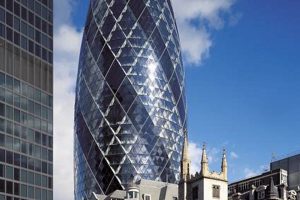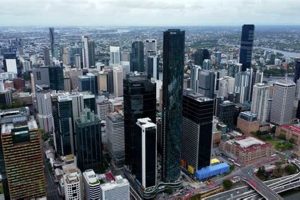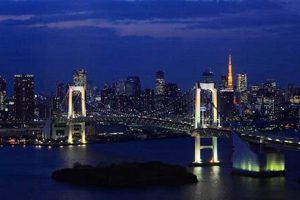Skyscraper Art Deco is an architectural style that emerged in the 1920s and flourished in the 1930s. It is characterized by tall, slender buildings with setbacks, geometric ornamentation, and stylized motifs. Notable examples include the Empire State Building and the Chrysler Building in New York City.
Skyscraper Art Deco was influenced by a number of factors, including the rise of the skyscraper, the Art Deco movement in the decorative arts, and the desire to create a new American architectural style. It was seen as a symbol of progress and modernity, and it helped to define the skylines of many American cities.
Skyscraper Art Deco had a significant impact on the development of architecture. It helped to popularize the use of setbacks, which create a more gradual transition from the street to the tower. It also introduced new decorative elements, such as geometric patterns and stylized motifs. These elements were often used to create a sense of rhythm and movement in the building’s facade.
1. Height
The height of Skyscraper Art Deco buildings is one of their most defining characteristics. These buildings were designed to be tall and slender, with many rising over 100 stories. This height was made possible by the development of new building technologies, such as the steel frame. The height of Skyscraper Art Deco buildings also reflected the optimism and prosperity of the early 20th century.
- Structural innovation: The steel frame allowed architects to build taller buildings than ever before. This new technology made it possible to create buildings that were both tall and slender, with large windows and open floor plans.
- Symbol of progress: The height of Skyscraper Art Deco buildings was also a symbol of progress and modernity. These buildings were seen as a representation of the American spirit of innovation and ambition.
- Verticality: The height of Skyscraper Art Deco buildings emphasizes verticality, with long, slender lines that create a sense of height and movement. This verticality is often accentuated by the use of setbacks and other decorative elements.
- Urban landmarks: Skyscraper Art Deco buildings are often landmarks in the cities where they are located. Their height and distinctive design make them easily recognizable and iconic.
The height of Skyscraper Art Deco buildings is one of the things that makes them so unique and iconic. These buildings are a reminder of the optimism and prosperity of the early 20th century, and they continue to be admired today for their beauty and grandeur.
2. Setbacks
Setbacks are a defining feature of Skyscraper Art Deco buildings. They are setbacks in the building’s facade that create a more gradual transition from the street to the tower. This not only makes the building more visually appealing, but it also serves a number of practical purposes.
One of the most important benefits of setbacks is that they reduce wind resistance. This is important for tall buildings, which are more susceptible to wind damage. Setbacks help to break up the wind’s force, reducing the amount of stress on the building’s structure.
Setbacks also help to improve the building’s energy efficiency. By reducing wind resistance, setbacks help to keep the building warmer in the winter and cooler in the summer. This can lead to significant savings on energy costs.
In addition to their practical benefits, setbacks also have a number of aesthetic benefits. They can help to create a more visually interesting building, and they can also be used to emphasize certain features of the building’s design.
One of the most famous examples of a Skyscraper Art Deco building with setbacks is the Empire State Building in New York City. The Empire State Building has a total of 102 setbacks, which helps to reduce wind resistance and improve energy efficiency. The setbacks also create a more visually interesting building, and they help to emphasize the building’s tower.
Setbacks are an important part of Skyscraper Art Deco architecture. They serve a number of practical and aesthetic purposes, and they help to create some of the most iconic buildings in the world.
3. Geometric ornamentation
Geometric ornamentation is a defining characteristic of Skyscraper Art Deco buildings. These buildings are often decorated with geometric patterns, such as zigzags and chevrons, which are used to create a sense of rhythm and movement in the building’s facade.
- Emphasis on verticality: Geometric patterns can be used to emphasize the verticality of Skyscraper Art Deco buildings. This is often done by using vertical lines and chevrons, which create a sense of height and movement.
- Art Deco motifs: Geometric patterns are often combined with other Art Deco motifs, such as stylized animals and plants. This creates a unique and distinctive style that is characteristic of Skyscraper Art Deco buildings.
- Influence of the machine age: The use of geometric patterns in Skyscraper Art Deco buildings was influenced by the machine age. This was a time of great technological advancement, and geometric patterns were seen as a symbol of progress and modernity.
- Examples: Some of the most famous examples of Skyscraper Art Deco buildings with geometric ornamentation include the Chrysler Building and the Empire State Building in New York City, and the Rockefeller Center.
Geometric ornamentation is an important part of Skyscraper Art Deco architecture. It helps to create a sense of rhythm and movement in the building’s facade, and it emphasizes the verticality of these buildings. Geometric patterns are also a symbol of the machine age, and they help to create a unique and distinctive style that is characteristic of Skyscraper Art Deco buildings.
4. Stylized motifs
Stylized motifs are a defining characteristic of Skyscraper Art Deco buildings. These motifs are often inspired by nature, and they are used to add a sense of grandeur and opulence to the building’s facade.
- Symbolism: Stylized motifs can be used to symbolize a variety of things, such as strength, power, and wealth. This symbolism is often tied to the animal kingdom, with animals such as eagles and lions being seen as symbols of strength and power.
- Decoration: Stylized
motifs can also be used purely for decoration. They can be used to add a sense of visual interest to the building’s facade, and they can also be used to create a sense of rhythm and movement. - Examples: Some of the most famous examples of Skyscraper Art Deco buildings with stylized motifs include the Chrysler Building and the Empire State Building in New York City, and the Rockefeller Center.
Stylized motifs are an important part of Skyscraper Art Deco architecture. They add a sense of grandeur and opulence to the building’s facade, and they can also be used to symbolize a variety of things. Stylized motifs are a unique and distinctive feature of Skyscraper Art Deco buildings, and they help to create a sense of place and time.
5. Verticality
Verticality is one of the defining characteristics of Skyscraper Art Deco buildings. This emphasis on verticality is achieved through the use of long, slender lines that create a sense of height and movement. This verticality is often accentuated by the use of setbacks and other decorative elements.
There are several reasons why architects chose to emphasize verticality in Skyscraper Art Deco buildings. First, verticality was seen as a symbol of progress and modernity. In the early 20th century, skyscrapers were the tallest buildings in the world, and they were seen as a representation of the American spirit of innovation and ambition. Second, verticality helped to make buildings more efficient. By building taller, architects were able to create more floor space without taking up more land. Third, verticality could be used to create a sense of drama and excitement. The long, slender lines of Skyscraper Art Deco buildings create a sense of movement and energy, which can be visually appealing.
One of the most famous examples of a Skyscraper Art Deco building that emphasizes verticality is the Empire State Building in New York City. The Empire State Building is 102 stories tall, and its long, slender lines create a sense of height and movement that is both visually appealing and awe-inspiring.
The emphasis on verticality in Skyscraper Art Deco buildings is a key part of what makes these buildings so unique and iconic. This verticality is a symbol of progress, modernity, and efficiency, and it helps to create a sense of drama and excitement.
Skyscraper Art Deco FAQs
Skyscraper Art Deco is a distinctive architectural style that emerged in the 1920s and flourished in the 1930s. Here are answers to some common questions about this iconic style:
Question 1: What is Skyscraper Art Deco?
Skyscraper Art Deco is a style of architecture that is characterized by tall, slender buildings with setbacks, geometric ornamentation, and stylized motifs. These buildings were often designed to be symbols of progress and modernity, and they continue to be admired today for their beauty and grandeur.
Question 2: What are some of the key features of Skyscraper Art Deco buildings?
Some of the key features of Skyscraper Art Deco buildings include their height, setbacks, geometric ornamentation, stylized motifs, and emphasis on verticality. These features combine to create a distinctive and iconic architectural style.
Question 3: When was Skyscraper Art Deco popular?
Skyscraper Art Deco was popular from the 1920s to the 1930s. This period was a time of great economic growth and prosperity, and the construction of skyscrapers was seen as a symbol of progress and modernity.
Question 4: What are some of the most famous examples of Skyscraper Art Deco buildings?
Some of the most famous examples of Skyscraper Art Deco buildings include the Empire State Building, the Chrysler Building, and the Rockefeller Center in New York City, and the Hoover Building in Washington, D.C.
Question 5: Why is Skyscraper Art Deco still popular today?
Skyscraper Art Deco is still popular today because of its beauty, grandeur, and historical significance. These buildings are a reminder of the optimism and prosperity of the early 20th century, and they continue to be admired for their architectural excellence.
Question 6: Where can I find more information about Skyscraper Art Deco?
There are many resources available to learn more about Skyscraper Art Deco. You can find books, articles, and websites that provide detailed information about this architectural style. You can also visit museums and historic sites to see examples of Skyscraper Art Deco buildings in person.
Skyscraper Art Deco is a fascinating and iconic architectural style that continues to be admired today. These buildings are a reminder of the optimism and prosperity of the early 20th century, and they continue to inspire architects and designers around the world.
Transition to the next article section:
Skyscraper Art Deco buildings are a unique and important part of our architectural heritage. They are a reminder of the optimism and prosperity of the early 20th century, and they continue to be admired for their beauty and grandeur. If you are interested in learning more about this architectural style, there are many resources available to help you.
Tips on Skyscraper Art Deco
Skyscraper Art Deco is a distinctive architectural style that emerged in the 1920s and flourished in the 1930s. Here are a few tips to help you identify and appreciate this iconic style:
Tip 1: Look for height and setbacks. Skyscraper Art Deco buildings are typically tall and slender, with setbacks that create a more gradual transition from the street to the tower. This emphasis on verticality is one of the defining characteristics of the style.
Tip 2: Pay attention to geometric ornamentation. Skyscraper Art Deco buildings are often decorated with geometric patterns, such as zigzags and chevrons. These patterns can be used to create a sense of rhythm and movement in the building’s facade.
Tip 3: Look for stylized motifs. Skyscraper Art Deco buildings often feature stylized motifs, such as eagles, lions, and other animals. These motifs can be used to add a sense of grandeur and opulence to the building’s facade.
Tip 4: Consider the historical context. Skyscraper Art Deco buildings were built during a time of great economic growth and prosperity. They were seen as symbols of progress and modernity, and they continue to be admired today for their beauty and grandeur.
Tip 5: Visit famous examples. Some of the most famous examples of Skyscraper Art Deco buildings include the Empire State Building, the Chrysler Building, and the Rockefeller Center in New York City, and the Hoover Building in Washington, D.C. Visiting these buildings in person is a great way to appreciate the beauty and grandeur of this architectural style.
Summary: Skyscraper Art Deco is a unique and iconic architectural style that is characterized by its height, setbacks, geometric ornamentation, and stylized motifs. These buildings were built during a time of great economic growth and prosperity, and they continue to be admired today for their beauty and grandeur. If you are interested in learning more about this architectural style, there are many resources available to help you.
Transition to the article’s conclusion: Skyscraper Art Deco buildings are a reminder of the optimism and prosperity of the early 20th century. They are a testament to the creativity and innovation of the arch
itects and engineers who designed them. These buildings continue to inspire architects and designers around the world, and they are a valuable part of our architectural heritage.
Skyscraper Art Deco
Skyscraper Art Deco is a distinctive and iconic architectural style that emerged in the 1920s and flourished in the 1930s. Characterized by its height, setbacks, geometric ornamentation, and stylized motifs, this style was a symbol of progress and prosperity during a time of great economic growth.
Skyscraper Art Deco buildings continue to be admired today for their beauty and grandeur. They are a reminder of the optimism and innovation of the early 20th century, and they continue to inspire architects and designers around the world. As we look to the future, it is important to preserve and celebrate these iconic buildings so that they can continue to inspire generations to come.







